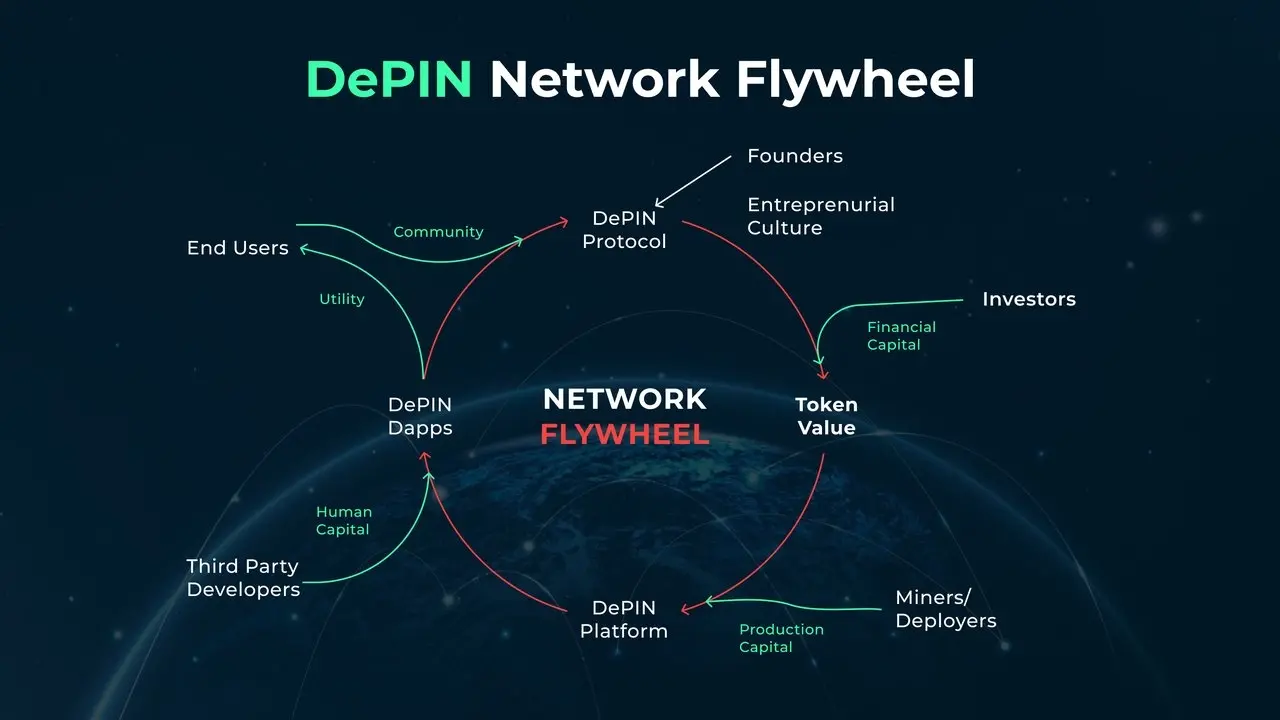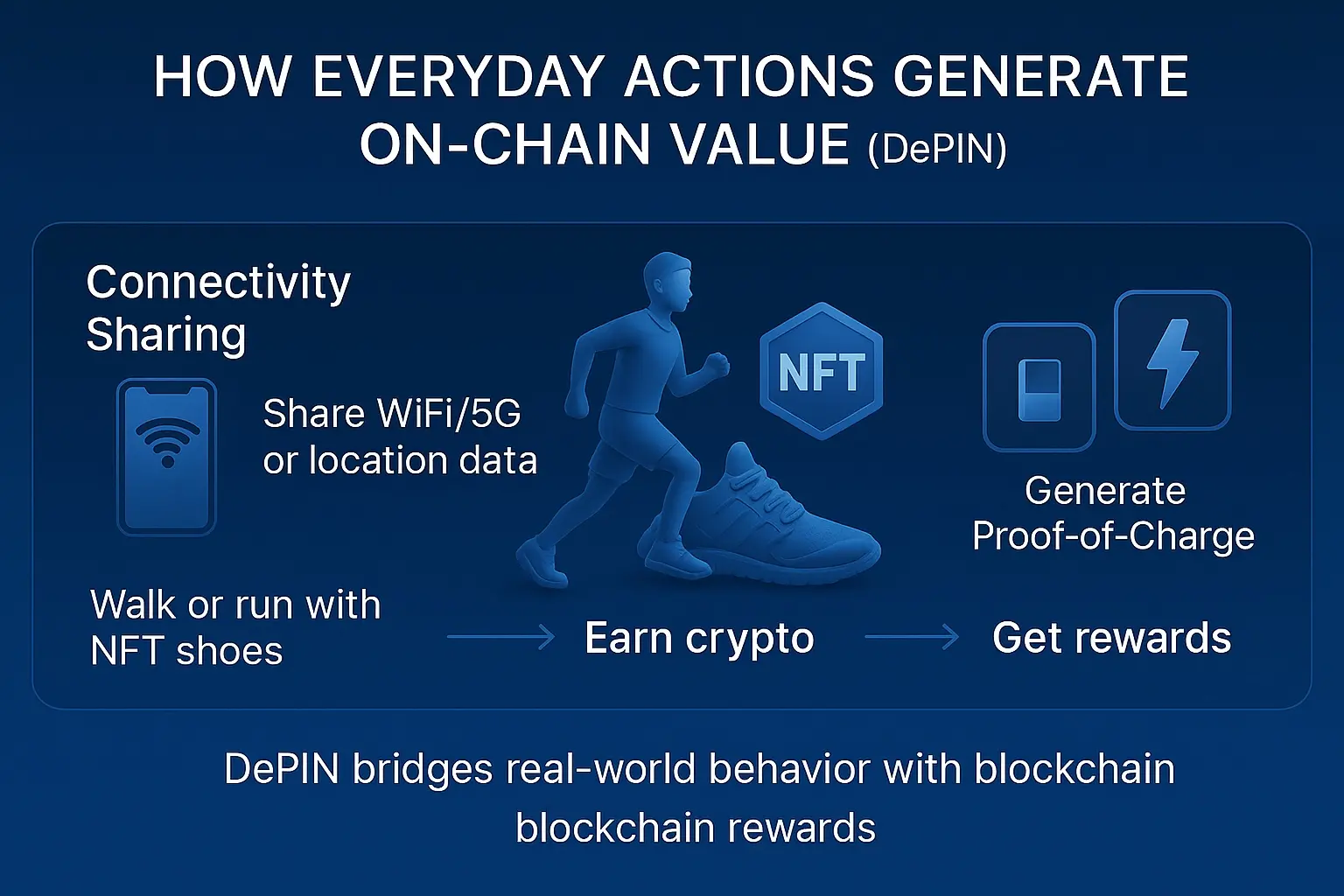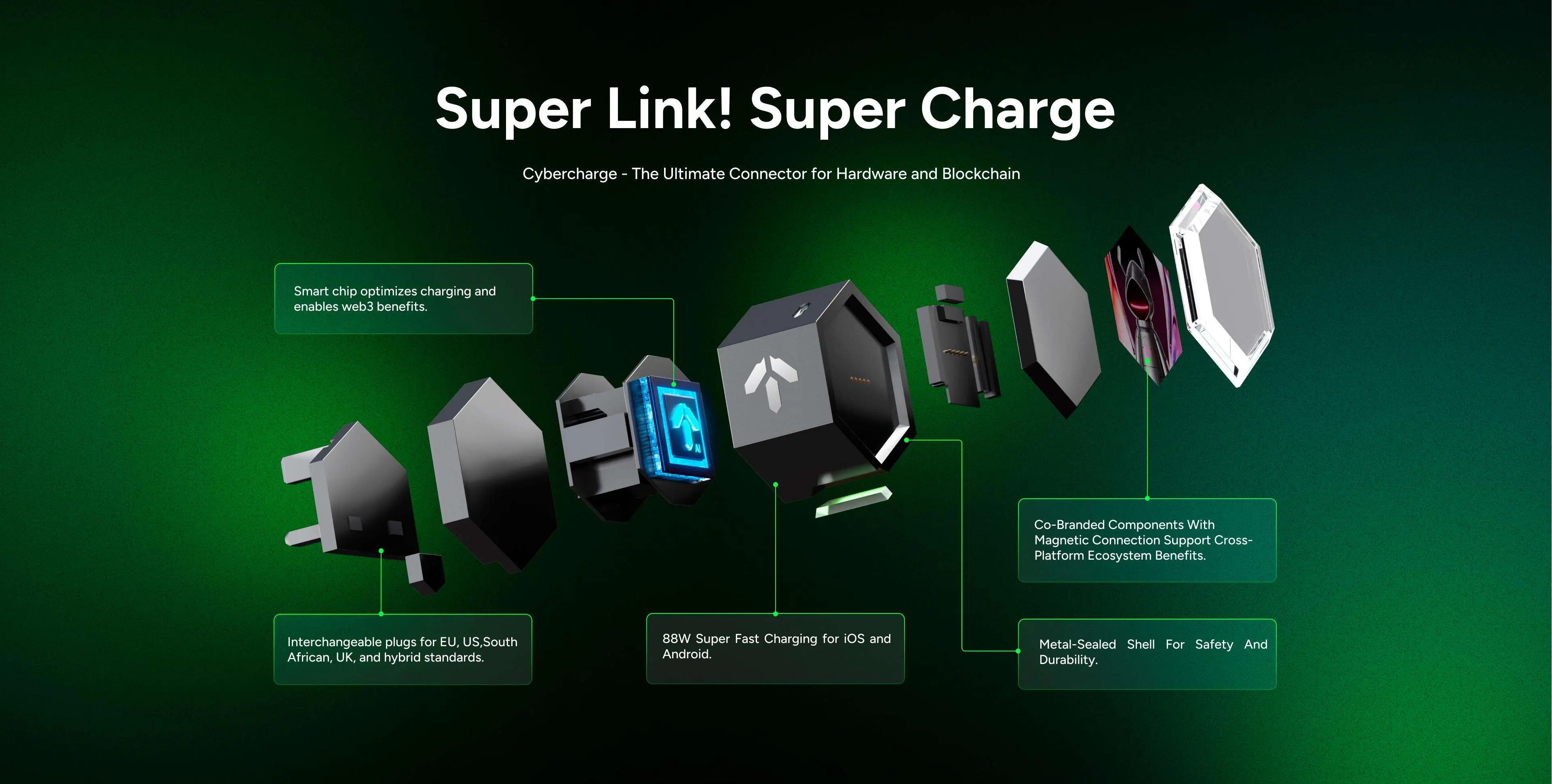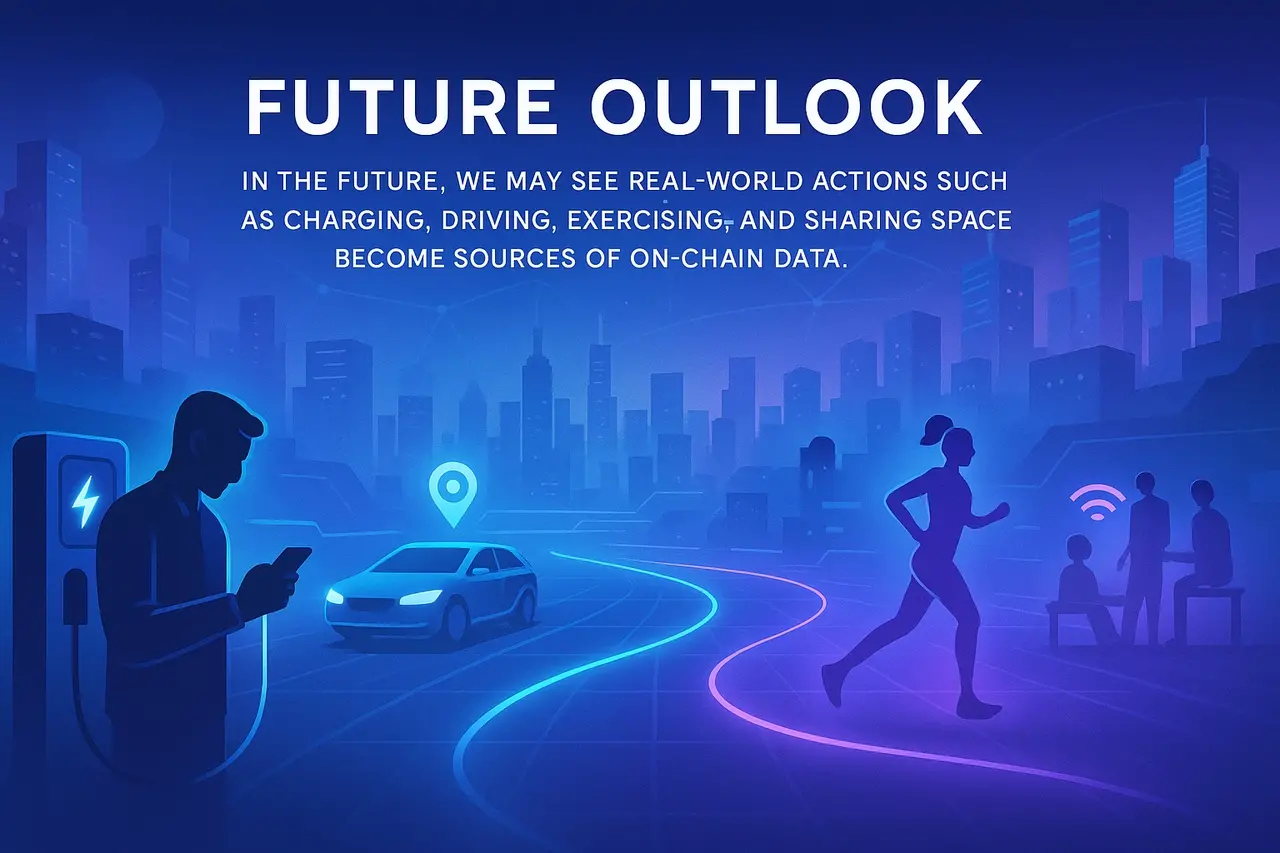Real-World Acts Are Becoming On-Chain Contributions
ChainCatcher2025-05-15 10:34:21
Remember the first time you heard about "walk to earn" or "network mining"? It probably sounded like science fiction. But with the rapid evolution of blockchain technology, these scenarios are steadily becoming reality. Even the most routine actions, like charging your phone or walking, can be transformed into on-chain value contributions right now. At the forefront of this shift is the rise of DePIN , a movement that leverages technical innovation to deeply connect the physical world with blockchain .
This article explores the technological trajectory of DePIN, to explore how it turns real world behavior into on chain assets and identity, and how it lowers the barrier to participation, refines incentive models, and broadens the spectrum of user interaction. We also take a look at what the future may hold for this rapidly evolving field.
From Mining to Meaningful Action
In the early stages of crypto development, the physical connection between everyday users and the blockchain world was almost nonexistent. Mining primarily relied on computational power and electricity, with participants concentrated in server rooms or mining farms. In recent years,through the rise of the “X to Earn” movement, most project like StepN, which reward users for walking or running, it has shifted user attention from raw computing to real world actions. The way people engage with blockchain value creation is quietly evolving. DePIN refers to the integration of physical infrastructure and user behavior into blockchain networks. It uses token incentives to encourage individuals to contribute real world resources or services. Put simply, DePIN allows ordinary people to support decentralized networks and receive digital rewards through everyday actions.
This shift didn’t happen by chance. Over the past few years, blockchain development have increasingly moved from rewarding abstract computing toward rewarding tangible contributions. This has given rise to a new wave of applications centered on resource sharing and behavioral participation. Whether it's deploying hardware, sharing bandwidth, or providing data, users can earn on chain rewards by participating in real world networks. Like StepN brought this concept to the mainstream, bridging blockchain with everyday activities and making “move-to-earn” a household concept. As a result, the blockchain is no longer reserved for tech-savvy users, it’s beginning to blend naturally into daily life.

How Can Everyday Actions Be Turned into On-Chain Value?
The DePIN sector is exploring a range of new use cases that convert everyday behaviors into on chain value:
-
Connectivity and Location Services: Users can earn token rewards by contributing to decentralized networks,through deploying shared hardware to provide WiFi, IoT, or 5G coverage, or uploading dashcam footage to enhance mapping data.
-
Health and Fitness: Physical activity is directly incentivized through tokenized rewards. "Move-to-Earn" project like StepN require users to own NFT sneakers. As they walk or run in the real world, they earn tokens. At its peak, StepN had over 530,000 daily active users and 2.3 million monthly active users. Although the hype has cooled, the model proved strong user demand for earning through real-world action.
-
Energy and Charging: Everyday charging behavior can also become a form of mining. One example is CyberCharge, which targets the high frequency scenario of device charging and has launched the first Web3 native smart charger. When users charge their devices as usual, a built-in chip records a "proof of charge" and issues token rewards. This transforms a routine activity, previously without financial return into a source of on chain value.
DePIN is effectively building a bridge between real world behaviors and blockchain based rewards, making individual contributions verifiable and incentivized on-chain.

Technical Evolution: Lowering the Barrier, Ensuring Authenticity
To turn everyday actions into on-chain assets, two technical challenges must be addressed: the participation barrier must be low, and the behavior must be real. The next generation of DePIN projects is evolving in this direction. In the past, users were expected to deploy mining rigs, run software, or stake nodes. Nowadays, projects like CyberCharge are taking a different approach, it's turning the miner into a charger. While this may sound surprising, the actual user experience is remarkably simple, users only need to plug a CyberCharge smart charger, and open the app, complete a real charging action. A “Proof of Charge” is then automatically recorded on chain. There is no need for technical knowledge or complicated setup, contribution is embedded directly in the act of charging.
To prevent fraud or spoofed activity, CyberCharge integrates smart chip verification at the hardware level. Only when actual current, voltage, and device response are detected will a valid action be recorded. The system also cross checks contextual data—such as time, environment, and power usage patterns, to flag abnormal behavior in real time, maximizing the trustworthiness of the on chain data. This direct link between real world physical behavior and on chain proof is emerging as a key breakthrough for DePIN projects seeking broader adoption.

From Behavior to Identity
Lowering the barrier to entry is only the first step. For DePIN projects to achieve lasting impact, they must deeply connect with users’ daily actions and assign meaningful value to each interaction. In the past, many projects relied on high short term rewards and through generous yields, airdrops, or mining incentives to drive user adoption. But once the subsidies ended, so did the momentum. In contrast, CyberCharge has taken a more scalable and forward looking path.
Instead of relying on reward heavy growth, CyberCharge is built on the principle of real behavior driving real experience. Users engage simply by charging their devices. The system verifies this genuine activity and logs it on chain in a transparent and traceable way. These behavior records are not static, they are reflected in the app in real time and converted into a form of "point based asset" that can be used in various interactive experiences, such as games, device upgrades, or identity linked benefits.
In this model, user actions are no longer isolated or transactional, they become cumulative credentials of long term participation. CyberCharge is also exploring a new participation paradigm, transforming user behavior into identity markers. The longer and deeper a user engages, the more recognition they receive from the system. The journey moves from unconscious contribution to intentional engagement. This shift marks a critical evolution in the DePIN space—from growth driven by external incentives to retention driven by intrinsic value.

Incentive Design
CyberCharge is exploring a distinct approach to incentive design. At its core, the system rewards real-world behavior, specifically verified charging activity. Upon completing a genuine charging session, users will receive $GEM, a utility token within the ecosystem. $GEM can be used for device upgrades, in app game modules, and ecosystem exploration. It also holds a degree of liquidity, creating room for broader interaction and engagement.
In parallel, CyberCharge introduces a dual token structure that separates utility from asset value. $GEM functions as a consumable reward token, while $CC represents an asse token with higher strategic significance. To further align long term participation, CyberCharge plans to design $veCC, a staked version of $CC designed for governance rights and a share in ecosystem level incentives. The $veCC mechanism is based on time weighted staking, users who commit to longer lock up periods receive proportionally greater rewards and influence. This structure is designed to attract genuine supporters—those willing to stake long-term commitment in exchange for deeper governance participation and greater upside within the system.
Looking Ahead
DePIN was once primarily a conceptual frontier, but with the emergence of real world projects like CyberCharge, this revolution is becoming tangible. More importantly, its potential reaches far beyond current applications. In the future, we may see an expanding range of real world behaviors structured and integrated onto the blockchain, from electricity usage, driving, fitness, and video capture to bandwidth sharing and spatial co utilization. Any action that occurs in the physical world could become a foundational data input and asset gateway for Web3.
CyberCharge represents just a starting point. By anchoring value to something as simple and frequent as phone charging, it has taken the first meaningful step toward bridging the physical world with on chain systems. In this emerging network defined by behavior, every action becomes data, every piece of data carries value and ultimately, that value belongs to the actor.
